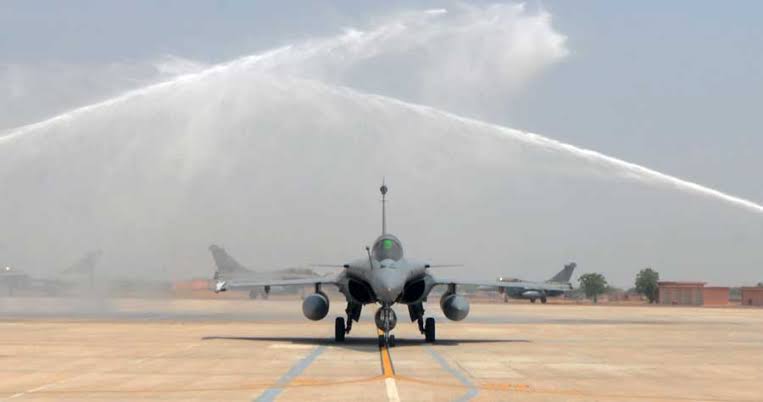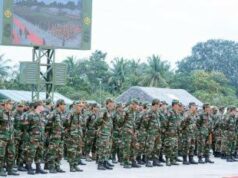For a two front war, IAF must be provided with full lift capability

Immediately after the Galwan Valley confrontation, the Security situation in Ladhak had shown a sudden downward turn for India. Also the ties between India and China had nosedived significantly following the fierce “Clash”.
Following the clashes, the entire 14 Corps went into high alert and the IAF rose to the occasion by deploying its fighter jets, including Rafale and Mig-29 aircraft, for combat air patrol. Even the Navy got ready to choke the jugular vein of the Chinese on various trade routes criss crossing the Indian Ocean.
The IAF also deployed its Su-30MKI and Jaguar jets for round-the-clock surveillance and intelligence gathering on the enemy build-up, besides putting several squadrons of combat aircraft in “offensive posturing” following the clashes on June 15, 2020.
In view of the escalating tensions, the IAF had further deployed a sizeable number of remotely piloted aircraft (RPAs) to keep a hawk-eye vigil on Chinese activities.
The IAF also quickly enhanced its air defence capabilities by installing various radars and bringing a range of surface-to-air guided weapons to frontline bases along the LAC in the region.
This required transportation by air. The strategy was to strengthen military posture, maintain credible forces and monitor the enemy build-up to effectively deal with any situation.
However the real “ battle was fought “ soon after by the transport aircrafts and helicopters of the IAF. In 1948 they had helped in saving Ladakh from the Pakistani Raiders by carrying out the first Dakota landing in Leh … a world record in itself. Thereafter they had carried out numerous sorties to lift Army’s assets into Ladakh. This feat has been repeated time and again in 1962 and during OP TRIDENT in 1987.
This time again the Transport and Helicopter Squadrons rose to the occasion. Various helicopters of the IAF were pressed into service for the transport of prefabricated structures, ammunition and spares of military equipment to mountainous bases.
Transport aircrafts lifted nearly 68,000 Army soldiers, around 90 tanks and other weapon systems like hundreds of BMP infantry combat vehicles, radar systems, artillery guns and many other equipment to eastern Ladakh from across the country for rapid deployment along the Line of Actual Control (LAC).
The troops and weapons were ferried by the transport fleet of the IAF within “very short period of time” for quick deployment in various inhospitable areas along the LAC under a special operation.
The total load carried by the transport fleet of the IAF, which included C-130J Super Hercules and C-17 Globemaster aircraft, was 9,000 tonnes and displayed the IAF’s increasing strategic airlift capabilities.
All this has highlighted the IAF’s strategic airlift capability which has increased over the years. The IAF platforms operated in extremely difficult circumstances and accomplished all their mission goals, said a source without sharing further details.
The government has been giving a major push to infrastructure development along the nearly 3,500 km long LAC following the eastern Ladakh faceoff. However what is required for long term is to plan a transport force which meets all the requirement of a two front war and in peace time all the needs of a major disaster anywhere in the country or the neighbourhood.
The defence ministry has already initiated work on enhancing the overall infrastructure at the Nyoma Advanced Landing Ground (ALG) in eastern Ladakh so that all kinds of military aircraft can operate from it. We also have ALGs at Daulat Beg Oldi and Chushul.
Our major offensive assets are 1 Corps and 17 Corps for the Chinese front and similarly two Corps for the Paki front. We need to have adequate transport assets to air lift them from East to West or vice versa. Also we need to carry out aerial insertion of an airborne brigade group on any of the fronts or in our neighbourhood if required.
Even the IAF and the Navy need air transportation to meet operational deployments.
To meet the above requirements, we must provide the IAF the following transport assets:
*Heavy lifters 70 tons payload – 3 x Squadrons (36 aircrafts ) we have just 11 x C17 aircrafts
*Heavy lifters 50 tons payload – 6 x Squadrons (72 aircrafts ) we have just 15 x IL76 aircrafts
*Medium lifters 20 tons payload – 6 x Squadrons (72 aircrafts ) we have just 12 × C130 aircrafts
*Light Medium lifters 10 tons payload – 12 x Squadrons (144 aircrafts) we have around 100 x AN32 and will have 56 X C295 in a few years to replace 56 x HS 748
* Light lifters 2 tons payload ….. 6 Squadrons (72) we have 56 X Dornier
The helicopter fleet of the IAF is one of the most heavily taxed utility be it operations or disaster/relief management. Thus the Helicopter provided to the IAF should be as under :
Super Heavy Support lifters 20 tons payload – 1 x Squadron (12 hptrs) we have a few Mi26 presently Unserviceable
Heavy Support lifters – 9 x Squadrons (108 x hptrs) we have 15 x Chinooks
Medium Support lifters 5 tons payload – 24 x Squadrons (288 hepters) we have 250 x MI 17
Light Support Lifters 2 tons payload – 15 x Squadrons (180 hptrs) we have 74 x Dhruv [Army Aviation Dhruvs will be separate]
Recce & observation – 15 x Squadrons (180 hepters) we have 94 x Alouettes/Lamas [Army Aviation will be separate]
Heavy Support hptrs are required for troop lift/load lift @ one per Army Command, one for A&N Command and two for IAF deployments. Similarly IAF needs the LSPs for its operational deployments. Recce & Support hptrs are required for each forward airbases, for Forward Air Controllers and Casualty evacuation.



